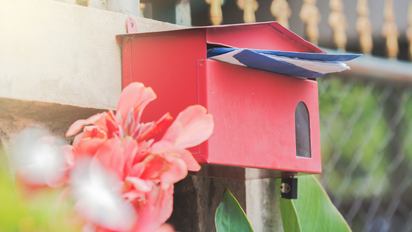The Latest
My basil plant was struggling. One single stalk produced a handful of strong, shiny leaves while the rest of the plant looked rather, well, pathetic. I found out just in time that the secret to a more well-rounded, robust plant was to snip leaves from the top of the stronger stalks and give the undeveloped portions more opportunity to grow. Now the basil is growing in abundance—a direct response from tending to the plant in a way that encourages it to give more.
Plants aside, this got me thinking that when it comes to direct response fundraising, it’s essential to tend to donors of all levels—not just major donors who are a “sure thing.” Anyone worth their salt in fundraising understands the critical importance of retention. As the primary goal for new-to-file donors, retention turns one-time donors into loyal and inspired donors who are committed to your mission—and who give more.
Cultivating strong relationships with donors is all about messaging and engagement. Donors want to know that they matter to your organization; they want to feel valued and that they made meaningful contributions.
That’s where the Donor Experience comes in. Used as a fundraising strategy, the Donor Experience is comprised of several critical objectives.
- Acknowledgment should be swift and timely. Each and every donation needs to be acknowledged by your organization—from $1 to $1,000,000 gifts. Acknowledging donors in a timely fashion results in deeper donor engagement. It shows the donor that you value their contribution.
- Capture the critical second gift. Shortly after the donor receives an acknowledgement for their first gift, a second ask should be made. Even if the donor initially declines, following up and asking for additional support helps drive long-term donor value. This might seem counter-intuitive, but it lets the donor know that there is more work to be done and inspires future giving.
- Engage donors, the right way. Send the right offer to the right donor at the right time via the right channel. It sounds so simple, but it is incredibly important to do. Understanding how each segment of your file responds to certain messaging, timing, and delivery methods has a direct correlation to the health of your fundraising program.
- Develop an effective content strategy. If segmentation is responsible for half of a campaign’s success, copy, graphics, and interactive elements drive the balance. Designing effective direct response campaigns—from direct mail packages to email campaigns to digital advertisements and more—requires a combination of strong brand identity, meaningful storytelling, and data-backed techniques that inspire action.
Building and cultivating a healthy donor file requires care and careful tending. It calls for a strategic approach that is steeped in experience and backed by data. By using the the Donor Experience guidelines, your file will vitally improve and yield greater contributions from donors who will stand the test of time.
Looking for more information?
If you have questions about utilizing the Donor Experience in your fundraising program, contact us at info@thelukenscompany.com. We have over 30 years of experience helping nonprofits raise funds that enable them to do their important work.





